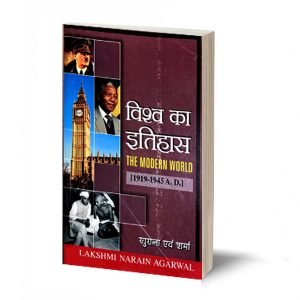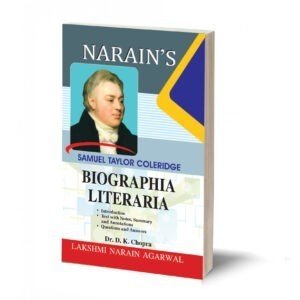Indian History (1206-1947) -(TEXT BOOK)- By K.L. Khurana
₹629.00
Indian History (1206-1947) – , By – Dr. K.L. Khurana, ISBN Code – 978-93-86544-31-5
CONTENTS :
Chapters
PART ONE
MEDIEVAL INDIA
THE SULTANATE OF DELHI
- Significant Source Material of Medieval India
- Rise of Islam and Arab Invasion of Sindh
- Rise of the Turks
- Shihabuddin Alias Muizuddin Muhammad Ghori (A. D. 1175 to 1250)
- The So-called Slave Dynasty (A. D. 1206 to 1290)
- Shamsuddin Iltutmish (A. D. 1211 to 1236)
- The Successors of lltutmish and the Rule of ‘The Forty’ (A. D. 1236 to 1266)
- Ghiasuddin Balban (A. D. 1266 to 1287)
- Successors of Balban and Decline of Slave Dynasty
- Khalji Dynasty (A. D. 1290 to 1320)
- Alauddin Khalji (A. D. 1296-1316)
- Successors of Alauddin Khalji and Downfall of Khalji Empire
- Tughlaq Dynasty (A.D. 1320 to 1414)
- Muhammad-bin-Tughlaq (A.D. 1325 to 1351)
- Firoz Shah Tughlaq (A.D. 1351 to 1388)
- Later Tughlugs and Invasion of Timur
- Sayyid Dynasty
- Lodi Dynasty (A. D. 1451 to 1526)
- Administration of Delhi Sultanate
- Society and Culture during Delhi Sultanate
- Rise of Provincial Kingdoms
Model Questions
Important Dates
Objective Questions and their Answers
Short Questions and Answers
- Babur (A. D. 1483-1530)
- Humayun (A. D. 1530-1556)
- Sher Shah and His Successors (A. D. 1540-1555)
- Akbar (A. D. 1556-1605)
- Jahangir (A. D. 1605-1627)
- Shahjahan (A. D. 1627-1658)
- Aurangzeb (A. D. 1658-1707)
- The Later Mughals and Decline of Mughal Empire
- Rise and Fall of Marathas
- Mughal Administration
- Society, Culture and Civilization during Mughal Period
Model Questions
Important Dates
Objective Questions and their Answers
Suggested Readings
PART TWO
MODERN INDIA
- Decline of the Mughals and Condition of India in the 18th Century
- The Rise and Development of the Maratha Power
- The Early European Settlements and Anglo-French Conflicts
- The Establishment of British Rule in India
- Warren Hastings (A. D. 1772-1785)
- Lord Cornwallis (A. D. 1786-1793)
- Lord Wellesley (A. D. 1798-1805)
- Role of Haider Ali and Tipu Sultan
- Lord Cornwallis to Lord Amherst (A. D. 1805-1828)
- Lord William Bentinck (A. D. 1823-1835)
- British Attitude towards Afghanistan and Sindh
- Anglo-Sikh Relations
- Lord Dalhousie (A. D. 1848-1856)
- The Revolt of A. D. 1857
- Lord Lytton to Lord Elgin II (A. D. 1876-1899)
- Lord Curzon (A. D. 1899-1905)
- Renaissance and Socio-Religious Movements in the Nineteenth Century
- The Growth of National Movement in India
- National Movement and Gandhian Era
- Muslim Communalism and Partition of India
- Eminent Leaders of the National Movement of India
- Constitutional Development of India
- Peasant and Labour Movements in India
- Education, Press Society and Economic Condition in Modern India
- The Leftist Movement in India
- The Legacy of British Rule to India
- Post-Independence Period (A. D. 1947-1967)
Chapterwise Model Questions
Short Questions, Objective Type Questions and Answers
Some Important Dates of Modern Indian History
Suggested Readings
For bulk quantity contact us at
Description
Indian History (1206-1947) – , By – Dr. K.L. Khurana, ISBN Code – 978-93-86544-31-5
CONTENTS :
Chapters
PART ONE
MEDIEVAL INDIA
THE SULTANATE OF DELHI
- Significant Source Material of Medieval India
- Rise of Islam and Arab Invasion of Sindh
- Rise of the Turks
- Shihabuddin Alias Muizuddin Muhammad Ghori (A. D. 1175 to 1250)
- The So-called Slave Dynasty (A. D. 1206 to 1290)
- Shamsuddin Iltutmish (A. D. 1211 to 1236)
- The Successors of lltutmish and the Rule of ‘The Forty’ (A. D. 1236 to 1266)
- Ghiasuddin Balban (A. D. 1266 to 1287)
- Successors of Balban and Decline of Slave Dynasty
- Khalji Dynasty (A. D. 1290 to 1320)
- Alauddin Khalji (A. D. 1296-1316)
- Successors of Alauddin Khalji and Downfall of Khalji Empire
- Tughlaq Dynasty (A.D. 1320 to 1414)
- Muhammad-bin-Tughlaq (A.D. 1325 to 1351)
- Firoz Shah Tughlaq (A.D. 1351 to 1388)
- Later Tughlugs and Invasion of Timur
- Sayyid Dynasty
- Lodi Dynasty (A. D. 1451 to 1526)
- Administration of Delhi Sultanate
- Society and Culture during Delhi Sultanate
- Rise of Provincial Kingdoms
Model Questions
Important Dates
Objective Questions and their Answers
Short Questions and Answers
- Babur (A. D. 1483-1530)
- Humayun (A. D. 1530-1556)
- Sher Shah and His Successors (A. D. 1540-1555)
- Akbar (A. D. 1556-1605)
- Jahangir (A. D. 1605-1627)
- Shahjahan (A. D. 1627-1658)
- Aurangzeb (A. D. 1658-1707)
- The Later Mughals and Decline of Mughal Empire
- Rise and Fall of Marathas
- Mughal Administration
- Society, Culture and Civilization during Mughal Period
Model Questions
Important Dates
Objective Questions and their Answers
Suggested Readings
PART TWO
MODERN INDIA
- Decline of the Mughals and Condition of India in the 18th Century
- The Rise and Development of the Maratha Power
- The Early European Settlements and Anglo-French Conflicts
- The Establishment of British Rule in India
- Warren Hastings (A. D. 1772-1785)
- Lord Cornwallis (A. D. 1786-1793)
- Lord Wellesley (A. D. 1798-1805)
- Role of Haider Ali and Tipu Sultan
- Lord Cornwallis to Lord Amherst (A. D. 1805-1828)
- Lord William Bentinck (A. D. 1823-1835)
- British Attitude towards Afghanistan and Sindh
- Anglo-Sikh Relations
- Lord Dalhousie (A. D. 1848-1856)
- The Revolt of A. D. 1857
- Lord Lytton to Lord Elgin II (A. D. 1876-1899)
- Lord Curzon (A. D. 1899-1905)
- Renaissance and Socio-Religious Movements in the Nineteenth Century
- The Growth of National Movement in India
- National Movement and Gandhian Era
- Muslim Communalism and Partition of India
- Eminent Leaders of the National Movement of India
- Constitutional Development of India
- Peasant and Labour Movements in India
- Education, Press Society and Economic Condition in Modern India
- The Leftist Movement in India
- The Legacy of British Rule to India
- Post-Independence Period (A. D. 1947-1967)
Chapterwise Model Questions
Short Questions, Objective Type Questions and Answers
Some Important Dates of Modern Indian History
Suggested Readings
Additional information
| Weight | 0.5 kg |
|---|---|
| Dimensions | 22 × 14 × 2 cm |
| Cover Type | Hard Bound Edition, Paper Back Edition |











Reviews
There are no reviews yet.